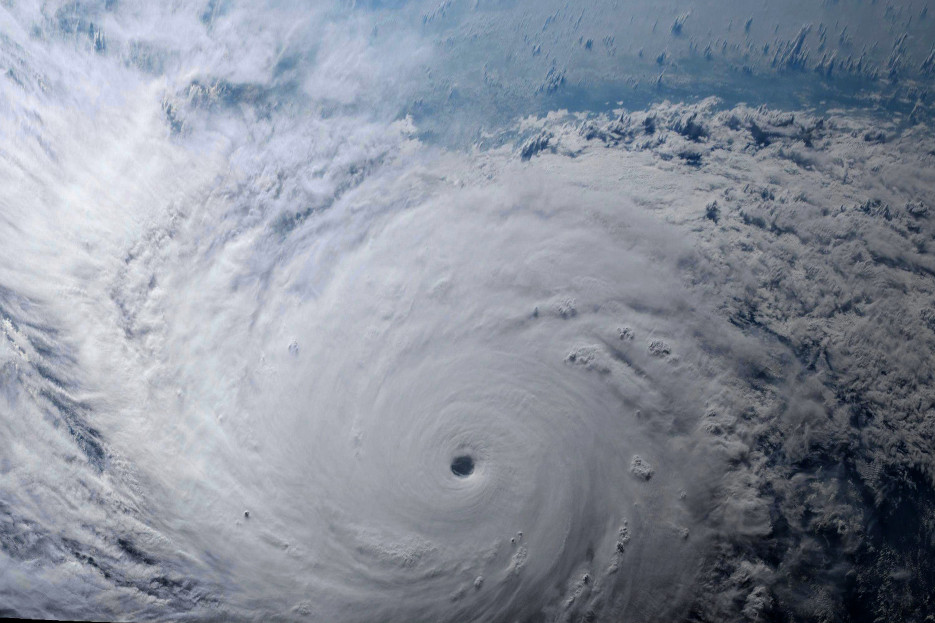One of the precursor projects for Tropical Weather Analytics’ Hurricane Hunter Satellites was the CyMISS (Tropical Cyclone intensity Measurements from the ISS) project which ran from 2014 to 2019. Funded by a series of grants from CASIS (Center for the Advancement of Science in Space) which manages the ISS US National Laboratory for NASA, CyMISS was performed by the science team at Visidyne (the corporate antecedent of Tropical Weather Analytics) for NASA’s Tropical Cyclone Experiment as part of NASA’s CEO (Crew Earth Observations) activities on the International Space Station. The goal of CyMISS was to acquire image sequences of intense tropical cyclones (TCs), such as hurricanes and typhoons, from the ISS using a specially designed photography protocol (see “The Cyclone Intensity Measurements from the ISS (CyMISS)”) to support the development of stereographic imaging techniques of these destructive storms. These techniques will allow the altitudes of the cloud tops near the eye of TCs to be precisely determined so that these TCs can be more accurately characterized compared to existing remote sensing methods (see “Using the Carnot Engine Model to Characterize Hurricanes from Orbit”).

During the course of this five-year project, the CyMISS science team (which is now the TWA science team) amassed a large collection of storm images that we wish to share. One of the first TCs observed by the crew of the ISS for CyMISS using our photography protocol, thanks to the efforts of ISS crew member Kimiya Yui of JAXA (Japan Aerospace Exploration Agency), was Super Typhoon Soudelor in early August 2015.
The crew of ISS Expedition 44 acquired a sequence of 311 images as part of a 5 minute, 11 second photography session starting at 07:58:48 GMT on August 4, 2015 (see “ISS Daily Summary Report – 08/4/15” and “Station Residents Get Ready for Russian Spacewalk and Japanese Cargo Mission“). A subset of the first 231 images from this sequence running to 08:02:38 GMT can be viewed in the video above. Typhoon Soudelor formed on July 29, 2015 in the Pacific Ocean and moved westward towards Asia. It quickly intensified and by August 3 was a “super typhoon” rated at Category 5 on the Saffir-Simpson scale. By the time the crew of the ISS photographed Soudelor in support of our project, it had been downgraded to a Category 4 storm. Below is a typical image from that sequence showing the eye of the storm.
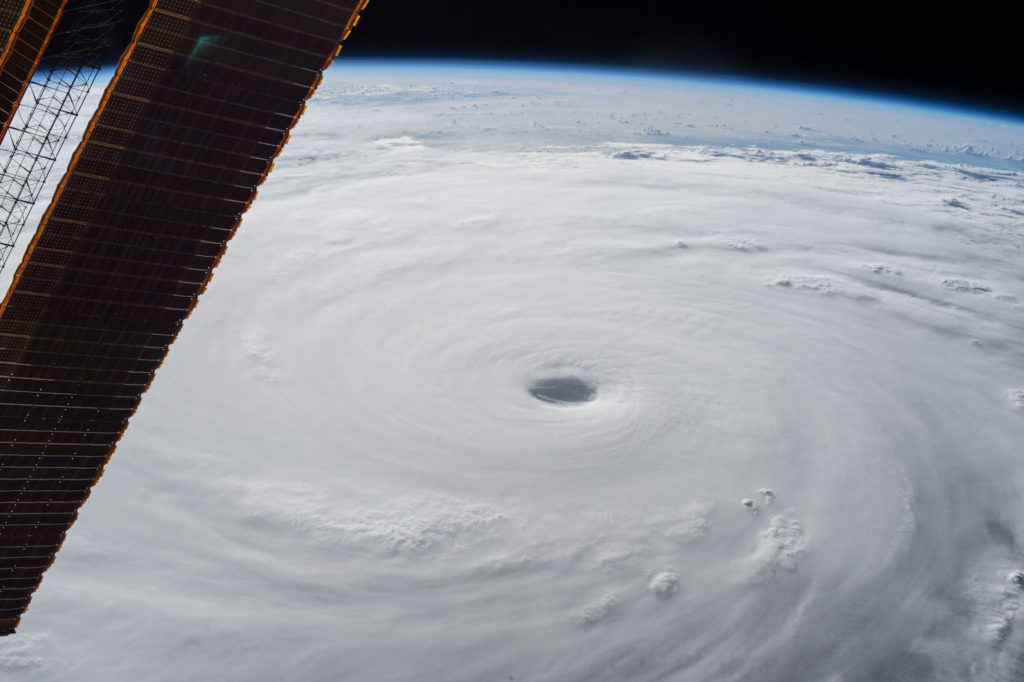
An anaglyphic 3D closeup of the 40-kilometer wide eye of Typhoon Soudelor as it appeared at 08:00:44 GMT is shown below. Created from images like that shown above, which had an effective pixel footprint of 120 by 260 meters at the storm’s eye, it has been reprojected to approximate an overhead view using only the red channel of the image to reduce the effects of atmospheric scattering and maximize the visibility of cloud features.
![]()
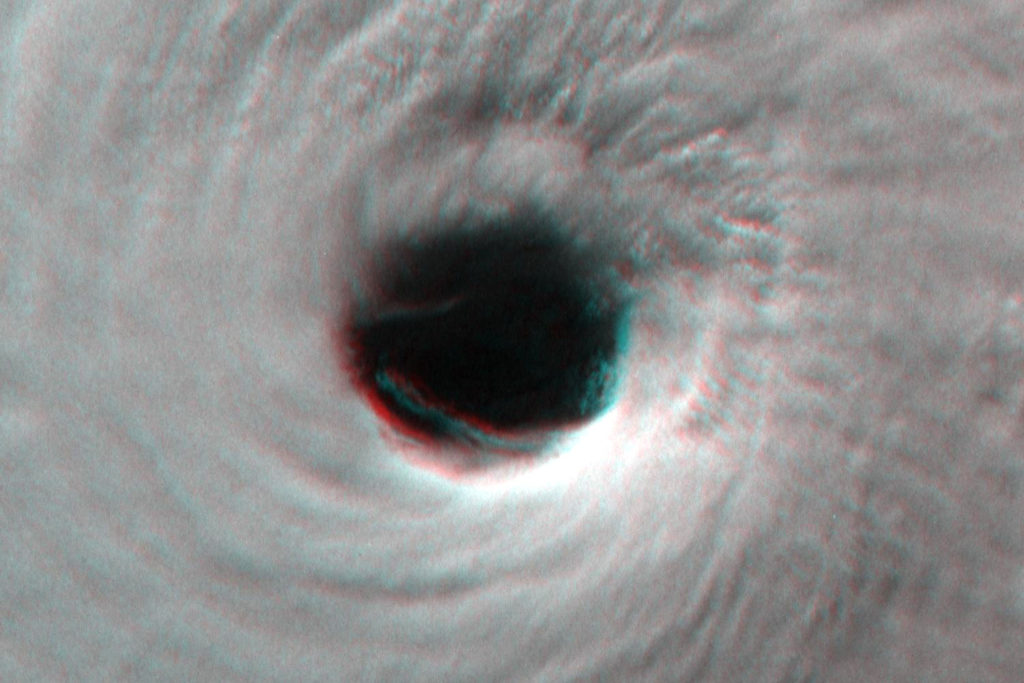
A 3D wide-area context image of Typhoon Soudelor created using a subset of 266 images acquired by the ISS crew is shown below. In order to create this anaglyphic 3D image (left eye red, right eye blue), the individual photographs from the original image sequence were remapped to approximate an overhead view before various parts of the frames were stitched together into a synoptic 3D mosaic covering an area of approximately 1,960 by 860 kilometers. A high resolution version of this synoptic 3D mosaic with an image scale of 500 meters/pixel can be viewed by clicking on the image below.
![]()
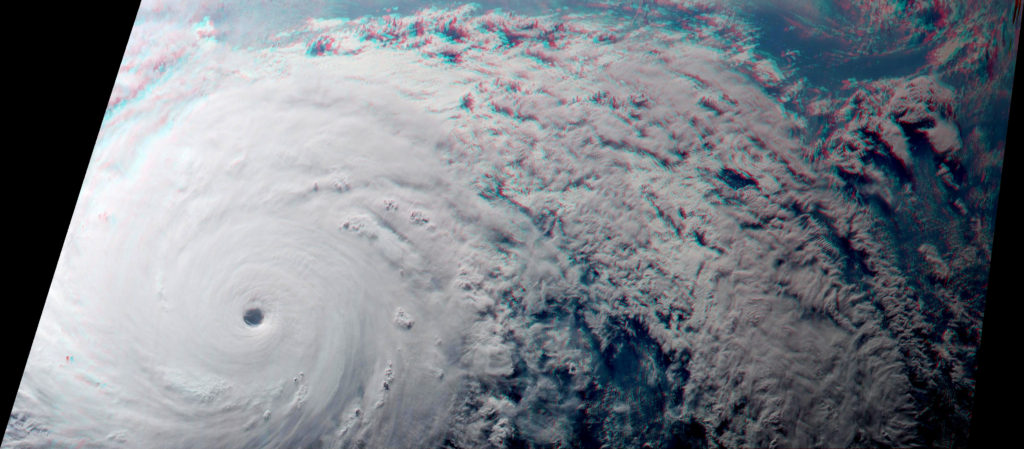
Given that this was the first image sequence acquired by the crew of the ISS using our photography protocol, early on the team was eager to experiment with the creation of 3D images using a variety of processing methods. As a bonus, below is another anaglyphic stereo image we produced using a pair of images acquired towards the end of the image sequence as the view moved beyond the edge of Typhoon Soudelor. In the lower left corner of the image are the outer bands of Soudelor with spectacular stereo view of clouds over the Pacific Ocean looking out towards the horizon including a group of towering cumulus clouds of a thunderstorm just above the center.
![]()
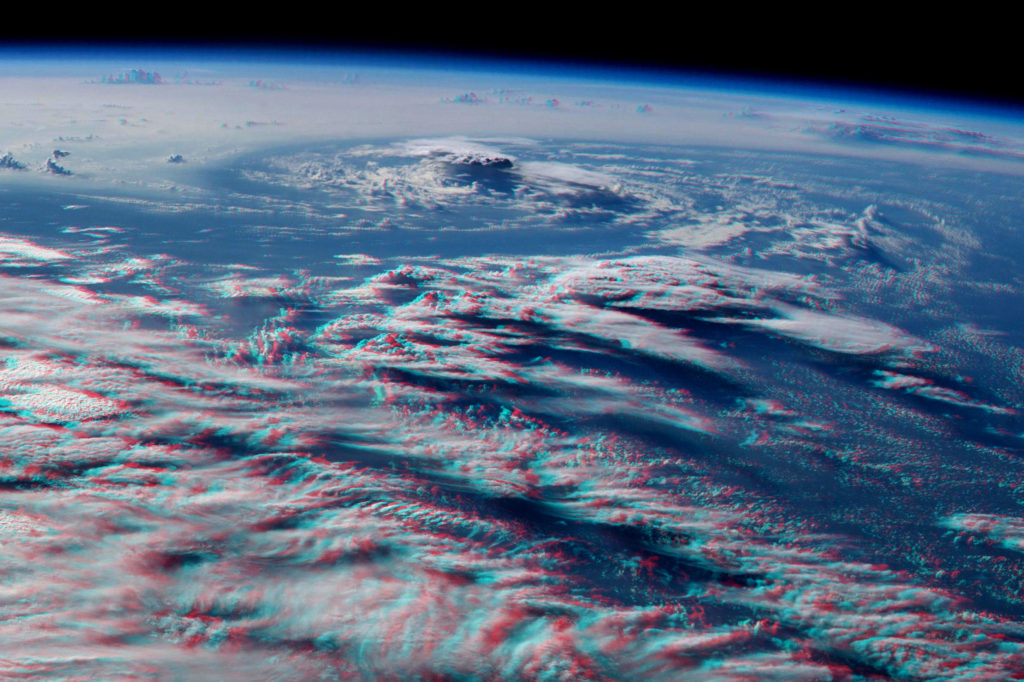
Related Reading
Drew LePage, “The Hurricane Hunter Satellites”, Drew Ex Machina, May 15, 2022 [Post]
Drew LePage, “Using the Carnot Engine Model to Characterize Hurricanes from Orbit”, TWA Blog, July 23, 2022 [Post]
Drew LePage, “Turn Up the Stereo”, TWA Blog, March 3, 2022 [Post]
Paul Joss, “The Cyclone Intensity Measurements from the ISS (CyMISS)”, Space Station Research Explorer [Page]
Mark Garcia, “Station Residents Get Ready for Russian Spacewalk and Japanese Cargo Mission”, NASA Space Station Blog, August 5, 2014 [Post]

